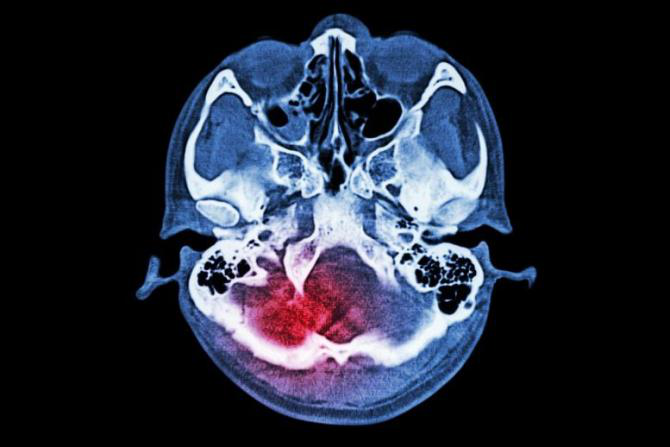博文
与中风风险和严重程度相关的10种生活方式因素
 精选
精选
||
科学家确定了与中风风险和严重程度相关的10种生活方式因素
诸平
据美国神经病学学会(American Academy of Neurology)2025年3月6日提供的消息,科学家确定了与中风风险和严重程度相关的10种生活方式因素(Scientists Identify 10 Lifestyle Factors Linked to Stroke Risk and Severity)。
一项新的研究发现,高血压、心房颤动和吸烟会显著增加中风的风险和严重程度。研究人员强调了控制这些风险因素的必要性,特别是在中风发病率上升的地区。(A new study found that high blood pressure, atrial fibrillation, and smoking significantly increase stroke risk and severity. Researchers highlighted the need to manage these risk factors, especially in regions with rising stroke rates.)
根据最近发表在美国神经病学学会医学杂志《神经病学》(Neurology)上的一项研究,有某些健康状况或习惯的人,如高血压、心房颤动(心跳不规律)或吸烟,不仅面临更高的中风风险,而且与没有这些风险因素的人相比,可能会经历更严重的中风。原文详见:Catriona Reddin, Michelle Canavan, Graeme J. Hankey, Shahram Oveisgharan, Peter Langhorne, Xingyu Wang, Helle Klingenberg Iversen, Fernando Lanas, Fawaz Al-Hussain, Anna Czlonkowska, Aytekin Oğuz, Conor Judge, Annika Rosengren, Denis Xavier, Salim Yusuf, Martin J. O’Donnell. Association of Vascular Risk With Severe vs Non-Severe StrokeAn Analysis of the INTERSTROKE Study. Neurology, 2024 Dec 10; 103(11): e210087. DOI: 10.1212/WNL.0000000000210087. Epub. 13 November 2024, 参与此项研究的有来自戈尔韦大学医学院(HRB Clinical Research Facility Galway, School of Medicine, University of Galway)、爱尔兰都柏林的惠康基金会-HRB爱尔兰临床学术培训(Wellcome Trust-HRB, Irish Clinical Academic Training, Dublin, Ireland)、英国伦敦大学学院(Institute of Health Informatics, University College London, United Kingdom)、澳大利亚西澳大利亚大学医学院(Perron Institute Chair in Stroke Research, Medical School, The University of Western Australia)、澳大利亚珀斯的佩伦神经与转化科学研究所(Perron Institute for Neurological and Translational Science Perth, Australia)、美国芝加哥拉什大学医学中心(Rush Alzheimer Disease Research Center, Rush University Medical Center, Chicago, IL, USA)、英国格拉斯哥大学(Academic Section of Geriatric Medicine, Glasgow Royal Infirmary, University of Glasgow, United Kingdom)、中国北京高血压联盟研究所(Beijing Hypertension League Institute, China)、丹麦哥本哈根大学(Health and Medical Sciences, University of Copenhagen, Denmark)、智利特穆科的拉弗朗特拉大学医学院(Faculty of Medicine, Universidad de La Frontera, Temuco, Chile)、沙特阿拉伯利雅得的沙特国王大学(King Saud University, Riyadh, Saudi Arabia)、波兰华沙的精神病学和神经病学研究所(Institute of Psychiatry and Neurology, Warsaw, Poland)、土耳其伊斯坦布尔·梅德尼耶特大学医学院(Department of Internal Medicine, Faculty of Medicine, Istanbul Medeniyet University, Turkey)、瑞典哥德堡大学(Sahlgrenska University Hospital and Sahlgrenska Academy, University of Gothenburg, Sweden)、印度班加罗尔的圣约翰医学院和研究所(St Johns Medical College and Research Institute, Bangalore, India)、加拿大安大略的汉密尔顿健康科学和麦克马斯特大学合办的人口健康研究所(Population Health Research Institute, Hamilton Health Sciences and McMaster University, Ontario, Canada)的研究人员。
上述研究论文的第一作者、爱尔兰戈尔韦大学(University of Galway in Ireland)医学博士、美国神经病学学会(American Academy of Neurology)成员卡特里奥娜·雷丁(Catriona Reddin)说:“中风可能导致残疾甚至死亡,但人们可以通过改变生活方式或药物来改变许多风险因素。我们的研究结果强调了控制中风危险因素的重要性,特别是高血压、心房颤动和吸烟,以防止严重的致残性中风。”
研究概述和参与者数据(Study Overview and Participant Data)
这项研究涉及来自32个国家的近2.7万人(26948),平均年龄为62岁。在这组人中,一半的人中风,一半的人没有中风。没有中风的参与者按年龄和性别与中风的人相匹配。
在中风患者中,4848人患有严重中风,8612人患有轻度至中度中风。严重中风被定义为从无法行走或在没有帮助的情况下无法自理到需要持续护理直至死亡的结果。轻度至中度中风被定义为从没有症状到需要一些个人护理帮助,但能够在没有他人帮助的情况下行走的结果。
分析主要危险因素(Key Risk Factors Analyzed)
研究人员评估了几种中风的危险因素(several stroke risk factors),包括
No | Stroke Risk Factors |
1 | 高血压(高于140/90mmHg)High blood pressure (above 140/90 mmHg) |
2 | 心房颤动Atrial fibrillation |
3 | 糖尿病Diabetes |
4 | 高胆固醇High cholesterol |
5 | 吸烟Smoking |
6 | 饮酒Alcohol consumption |
7 | 饮食质量Diet quality |
8 | 缺乏运动Physical inactivity |
9 | 心理和社会压力Psychological and social stress |
10 | 腹部脂肪过多(通过腰臀比测量)Excess abdominal fat (measured by waist-to-hip ratio) |
研究人员比较了严重中风和轻度至中度中风的重要危险因素对没有中风的人的影响。研究人员还比较了仅中风患者的风险因素的重要性,将严重中风患者与轻度至重度中风患者进行比较。
血压、心房颤动和吸烟的研究结果(Findings on Blood Pressure, Atrial Fibrillation, and Smoking)
严重中风患者中有74%患有高血压,而轻度至中度中风患者中有72%患有高血压。对于房颤,11%的严重中风患者有房颤,相比之下,9%的轻度至中度中风患者有房颤。两组中都有30%的人目前是吸烟者。
在调整了年龄、性别、国家和中风类型后,研究人员发现,与没有高血压的人相比,高血压患者发生严重中风的可能性是后者的3.2倍,轻度到中度中风的可能性是后者的2.9倍。
他们还发现,患有房颤的人发生严重中风的可能性是没有房颤的人的4.7倍,发生轻度到中度中风的可能性是没有房颤的人的3.6倍。
研究人员发现,吸烟者患严重中风的可能性是不吸烟者的1.9倍,患轻度至中度中风的可能性是不吸烟者的1.7倍。
卡特里奥娜·雷丁说:“我们的研究结果强调了控制高血压的重要性,这是全球范围内中风最重要的可改变风险因素。这对于年轻一代高血压和中风发病率迅速上升的中低收入国家尤为重要,也与年轻人吸烟有关。”
该研究的一个局限性是,一些可能导致中风严重程度的因素没有被测量。例如,卡特里奥娜·雷丁指出,吸烟与癌症和慢性阻塞性肺疾病等因素有关,这些因素也可能导致中风的严重程度增加。
本研究(INTERSTROKE study )得到了加拿大卫生研究院(Canadian Institutes of Health Research)、加拿大心脏和中风基金会(Heart and Stroke Foundation of Canada)、加拿大中风网络(Canadian Stroke Network)、瑞典研究委员会(Swedish Research Council)、瑞典心脏和肺基金会(Swedish Heart and Lung Foundation)、瑞典区域执行委员会医疗保健委员会{The Health & Medical Care Committee of the Regional Executive Board, Regiona Västra Götaland (Sweden)}的资助。并通过几家制药公司的无限制赠款,主要来自阿斯利康(AstraZeneca)、加拿大的勃林格·殷格翰(Boehringer Ingelheim, Canada)、加拿大辉瑞(Pfizer, Canada)等公司。杜伊斯堡-埃森大学神经学系(Department of Neurology at the University Duisburg-Essen)获得了德国研究委员会{German Research Council(DFG)}、德国教育和研究部{German Ministry of Education and Research(BMBF)}的资助。另外还有来自欧盟(European Union)、美国国立卫生研究院(NIH)、贝塔斯曼基金会(Bertelsmann Foundation)和海因茨-尼克斯多夫基金会(Heinz-Nixdorf Foundation)、爱尔兰临床学术培训方案{ Irish Clinical Academic Training (ICAT) Programme}、威康信托基金(Wellcome Trust)和卫生研究委员会{Health Research Board (grant number 203930/B/16/Z)}、卫生服务执行局(Health Service Executive)、全国医生培训和规划(National Doctors Training and Planning)以及北爱尔兰卫生和社会保健、研究和发展司(Health and Social Care, Research and Development Division, Northern Ireland)的资助。
上述介绍仅供参考,欲了解更多信息敬请注意浏览原文和相关报道。
Background and objectives: Acute stroke is associated with a spectrum of functional deficits. The objective of this analysis was to explore whether the importance of individual risk factors differ by stroke severity, which may be of relevance to public health strategies to reduce disability.
Methods: INTERSTROKE is an international case-control study of risk factors of first acute stroke (recruitment 2007-August 2015) in 32 countries. Stroke severity was measured using the modified Rankin Scale (mRS) score within 72 hours of admission to hospital. Severe stroke is defined as mRS scores of 4-6 (and non-severe stroke, score of 0-3). We used multinomial logistic regression to estimate comparative odds ratios (ORs; 95% CIs) for severe and non-severe stroke and tested for heterogeneity (pheterogeneity). We also conducted a matched case-case analysis (matched for age, sex, country, and primary stroke subtype) to determine whether the prevalence of risk factors differed significantly between severe and non-severe stroke. A significant difference in the association of a risk factor of severe stroke compared with non-severe stroke was defined as p < 0.05 for both pheterogeneity and pcase-case.
Results: Of patients with acute stroke (n = 13,460), 64.0% (n = 8,612) were reported to have mRS scores of 0-3 and 36.0% (n = 4,848) scores of 4-6. The mean age was 61.7 years for patients with non-severe stroke and 62.9 years for patients with severe stroke (p = 0.72). 38.1% (n = 3,278) of patients with non-severe stroke and 44.6% (n = 2,162) of patients with severe stroke were female. Hypertension (OR 3.21; 95% CI 2.97-3.47 for severe stroke, OR 2.87; 95% CI 2.69-3.05 for non-severe stroke; pheterogeneity = 0.03; pcase-case < 0.001), atrial fibrillation (OR 4.70; 95% CI 4.05-5.45 for severe stroke, OR 3.61; 95% CI 3.16-4.13 for non-severe stroke; pheterogeneity = 0.009; pcase-case < 0.001), and smoking (OR 1.87; 95% CI 1.72-2.03 for severe stroke, OR 1.65; 95% CI 1.54-1.77 for non-severe stroke; pheterogeneity = 0.02; pcase-case < 0.001) had a stronger association with severe stroke, compared with non-severe stroke. The waist-to-hip ratio had a stronger association with non-severe stroke compared with severe stroke (pheterogeneity < 0.001; pcase-case < 0.001).
Discussion: Hypertension, atrial fibrillation, and smoking had a stronger magnitude of association with severe stroke (compared with non-severe stroke) while the increased waist-to-hip ratio had a stronger magnitude of association with non-severe stroke.
https://wap.sciencenet.cn/blog-212210-1476438.html
上一篇:CRISPR的突破揭开了超大尺寸农产品的基因蓝图
下一篇:3.8妇女节的礼物:不是鲜花而是女性健康辅修课
